
Los Angeles is a city that lives and breathes film, so a visit to the Academy Museum of Motion Pictures is always a treat. But our recent trip was particularly special, as we had the chance to explore the new exhibition dedicated to the legendary John Waters, aptly titled "Pope of Trash."

The Academy Museum itself is a stunning blend of history, culture, and modern design.


Walking into the building, you're immediately struck by its sleek, cinematic feel—like stepping onto a movie set. The museum's exhibits are carefully curated, offering an immersive experience that covers the entire spectrum of film history.


But the real star of my visit was the John Waters exhibition, a tribute to the man who has unapologetically pushed the boundaries of filmmaking and pop culture for decades.

The "Pope of Trash" exhibition is everything you would expect from a showcase of John Waters' work—bold, brash, and utterly unforgettable. From the moment you step inside, you're greeted with an explosion of color and chaos, perfectly mirroring the filmmaker's unique aesthetic.

The exhibition takes you on a journey through Waters' career, from his early underground films like Pink Flamingos to cult classics like Hairspray.

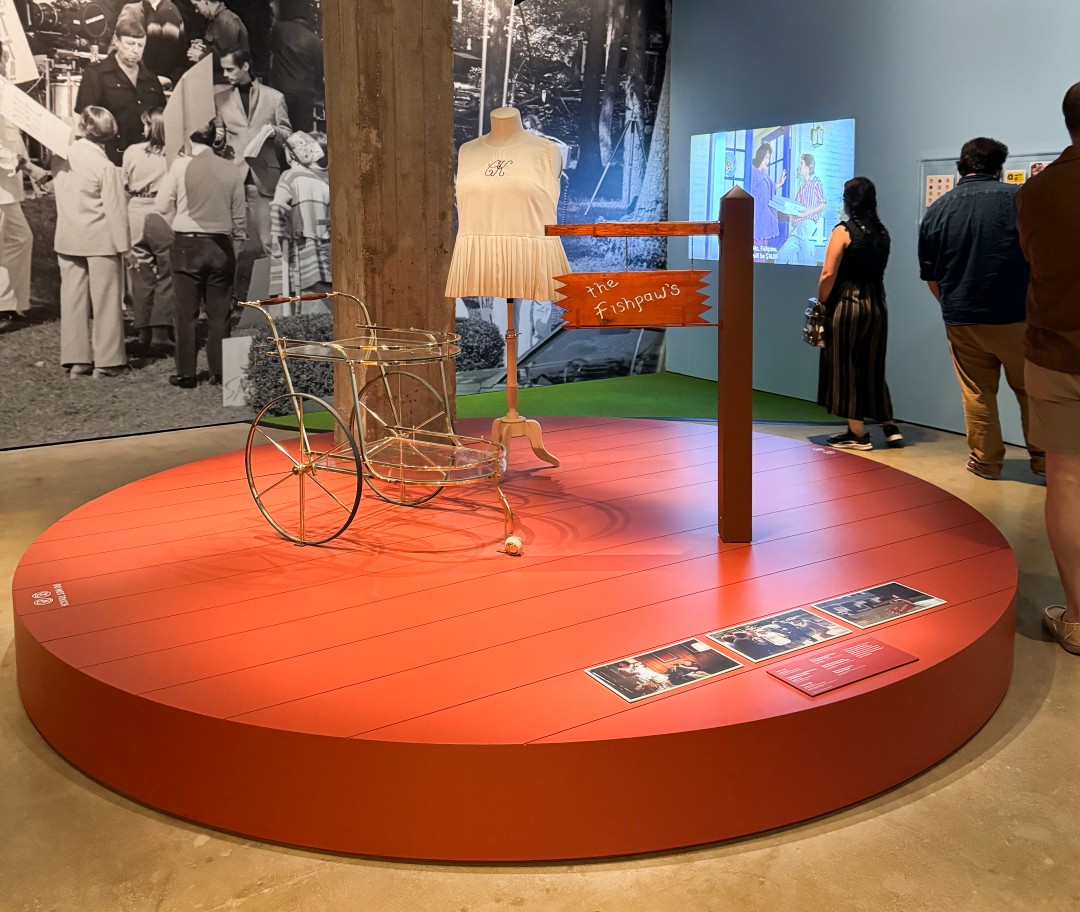



Every corner is filled with artifacts, behind-the-scenes footage, and personal items that offer a glimpse into the mind of a true iconoclast.

The "Hairspray" chapter within the "Pope of Trash" exhibition at the Academy Museum of Motion Pictures celebrates one of John Waters' most beloved and commercially successful films. This section of the exhibition dives deep into the world of Hairspray, the 1988 film that blended Waters' trademark subversive humor with a more mainstream appeal, making it a cultural phenomenon.

Visitors are treated to a rich display of costumes, props, and behind-the-scenes photographs that bring the vibrant 1960s setting of the film to life.

Central to this chapter is the story of Tracy Turnblad, the film's unlikely heroine, who challenges societal norms around race, beauty, and body image while dancing her way into the hearts of audiences.


The exhibition highlights how Hairspray tackled serious themes like racial integration and body positivity, all while maintaining the light-hearted, campy tone that defines Waters' work.


The exhibit includes original vinyl records, sheet music, and even choreography notes, offering a glimpse into the meticulous planning behind the film's iconic scenes. The "Hairspray" chapter not only celebrates the film's success but also illustrates how Waters' unique vision managed to cross over into the mainstream while still retaining his signature flair for the outrageous.

One of the highlights for me was seeing the actual costumes and props from Waters' films.


There's something surreal about standing inches away from Divine's iconic red dress or the outlandishly oversized wig from Female Trouble. It’s a reminder of how Waters' films are not just movies—they're full-blown cultural events.
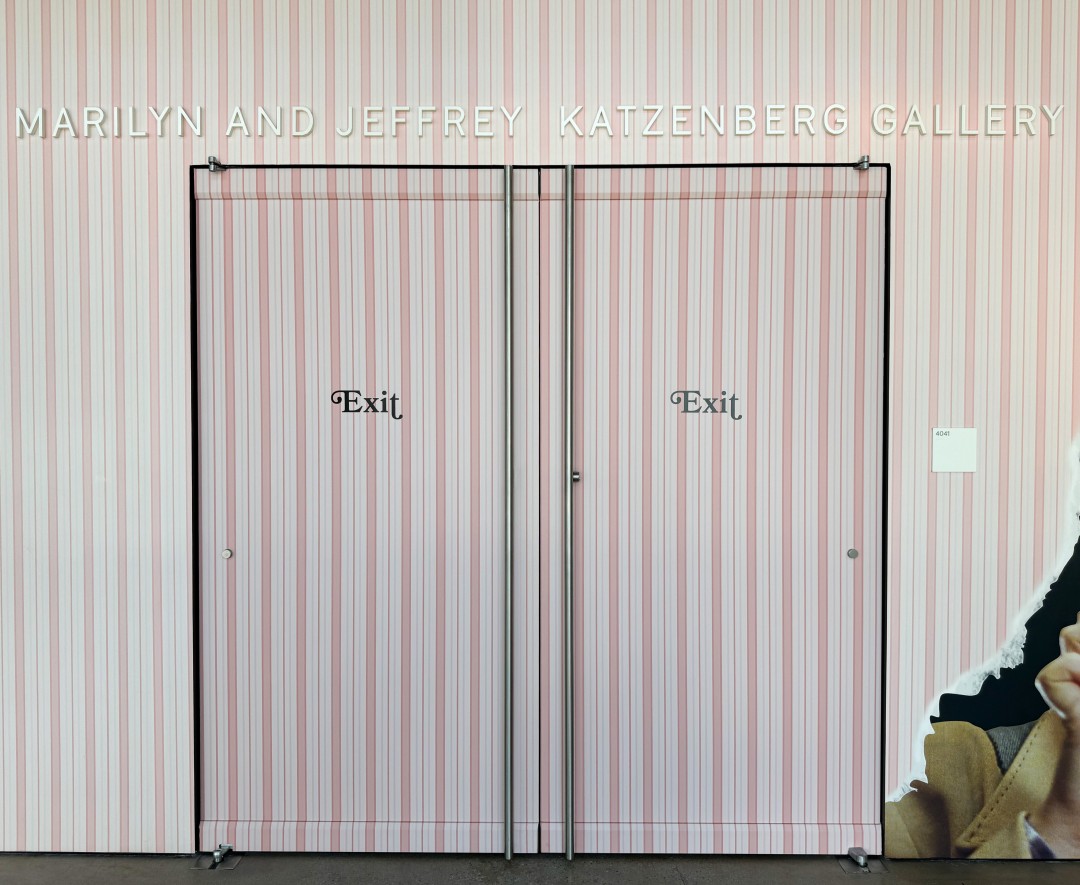
Let us exit the Pope of Trash exhibition and move onto the next.

We then saw the Pedro Almondóvar Installation. He is an Academy Award-winning filmmaker and is one of the most daring and influential writer-directors of our time, transformed Spanish cinema with his 21 feature films to date.


Pushing the boundaries of representation, Almodóvar centers on dynamic female characters and stories that express a fuller spectrum of the human condition. At times outlandish and provocative, his films - marked by exquisite performances, lush production design, and moving scores - are also deeply humanistic and compassionate.

"Inventing Worlds & Characters" at the Academy Museum of Motion Pictures is an exploration of the creative minds behind cinema's most unforgettable narratives. This exhibit delves into the artistry and imagination that bring fictional worlds and their inhabitants to life, offering visitors a behind-the-scenes look at the processes of world-building and character creation.

This is the set used for Guillermo del Toro's Pinocchio. For filmmaker Guillermo del Toro, stop-motion is "the most sacred and magical" animation art form. His take on Pinocchio takes place in 1930s fascist Italy and unfolds through visually stunning sets and puppets.


These are the figures used in Guillermo del Toro's Pinocchio.

And these are the original Pinocchio and Geppetto in the classic Carlo Collodi's Pinocchio (USA, 1940).
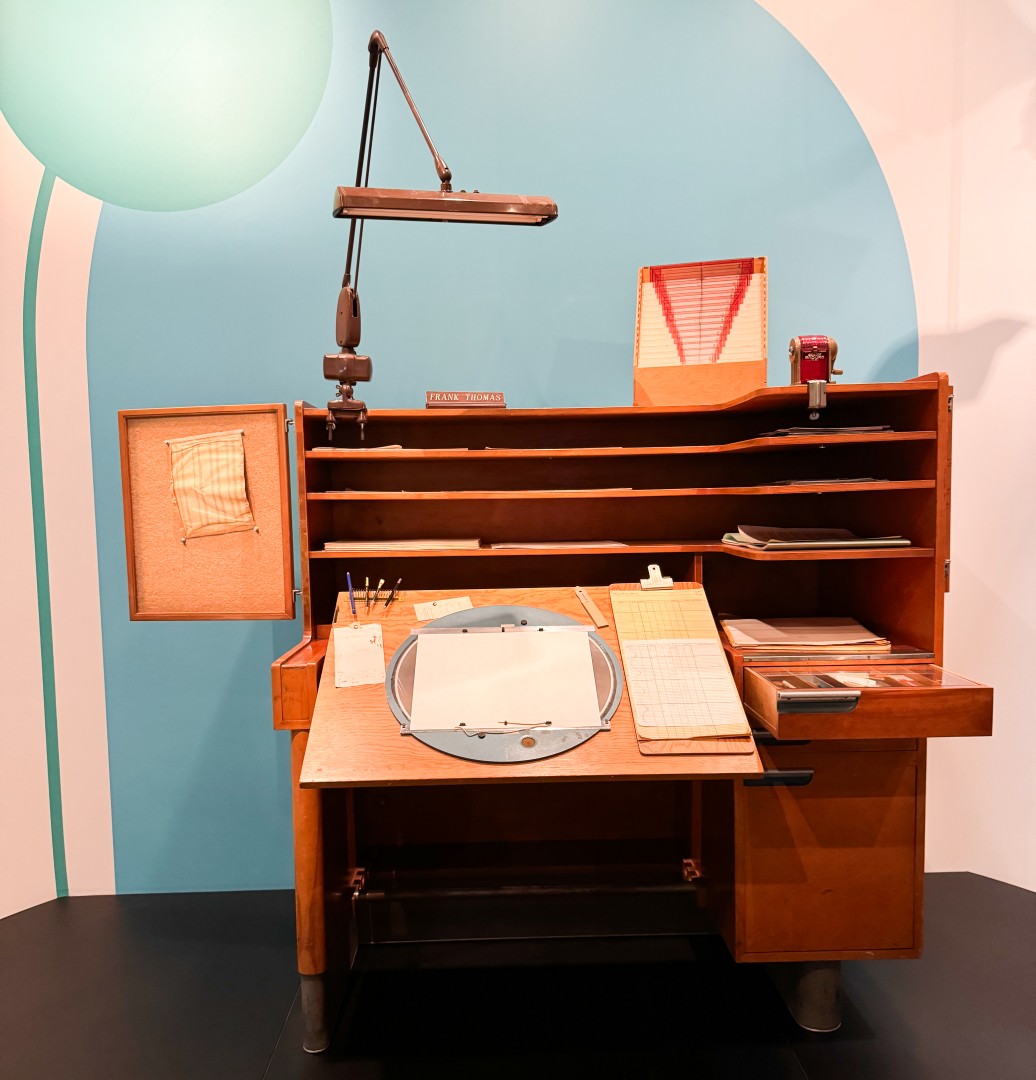
This is the actual desk used by Frank Thomas, an animator at Walt Disney. Thomas, in his thoroughness, came up with suggestions for the ideal height, angles, features, shelves, drawers, wings, and even the height of the window in the room to provide the best natural light for the ideal animator's desk. This desk is one that the Walt Disney studio let him move to his weekend cabin in Julian, California, in 1967. He would leave the studio after lunch on Fridays, pack up the car and the family, and head to the mountains. On Saturday and Sunday, he would put in the hours animating that he had missed by leaving early. The desks were modular to accommodate the tasks of the various artists at the studio: key animators, assistants, and layout artists.

If you want some Academy Museum merch, stop by at the store on the ground level.

If you crave something to eat in between the exhibitions, you can dine at Fanny's. Named after Fanny Brice, the legendary comedian and singer, Fanny's combines old Hollywood glamour with contemporary dining.

The restaurant's art deco-inspired design, with plush seating and dramatic lighting, creates an ambiance that evokes the golden age of film. The menu is a thoughtfully curated selection of classic and modern dishes, with an emphasis on seasonal and locally sourced ingredients.

If you're a fan of John Waters, or if you simply appreciate cinema that dares to be different, the "Pope of Trash" exhibition is a must-see. It’s a fitting tribute to a filmmaker who has spent his career celebrating the unconventional and the outrageous. And for anyone who loves the art of film, the Academy Museum of Motion Pictures is the perfect place to experience it all.
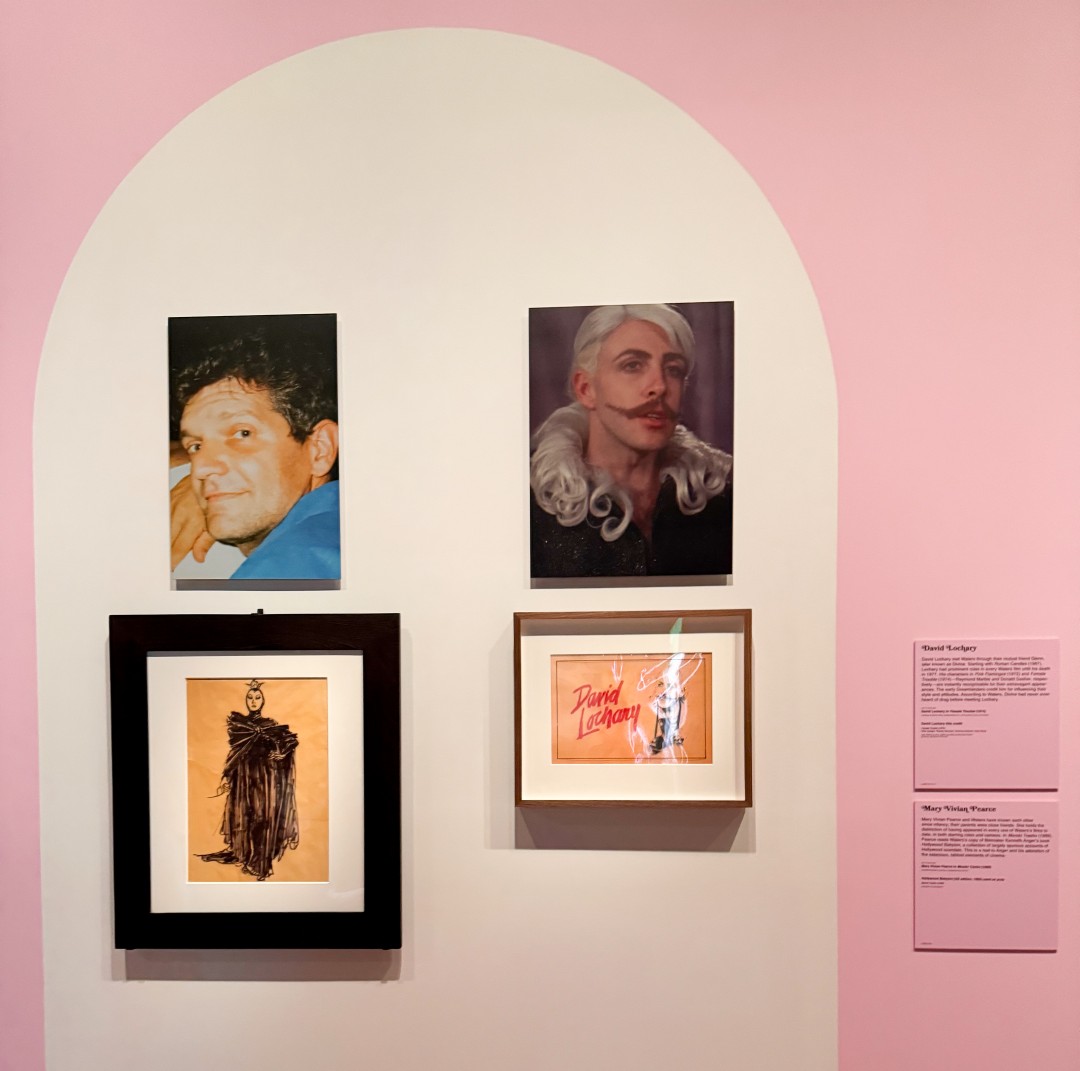
After spending a few hours immersed in Waters' world, we left the museum feeling inspired, a little bit shocked, and completely in awe of the creativity and audacity that has defined his career. The exhibition is a bold reminder that in a world of conformity, there's still room for those who dare to be different—and that’s something worth celebrating.
Until next time,
Logan & Chloe

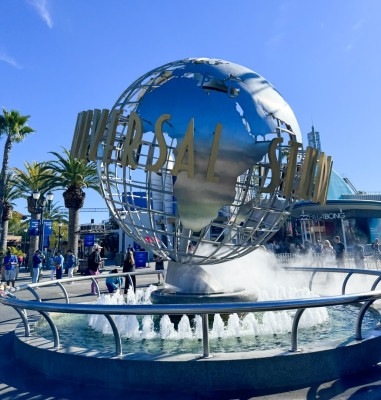













Los Angeles is a city that lives and breathes film, so a visit to the Academy Museum of Motion Pictures is always a treat. But our recent trip was particularly special, as we had the chance to explore the new exhibition dedicated to the legendary John Waters, aptly titled "Pope of Trash."
The Academy Museum itself is a stunning blend of history, culture, and modern design.
Walking into the building, you're immediately struck by its sleek, cinematic feel—like stepping onto a movie set. The museum's exhibits are carefully curated, offering an immersive experience that covers the entire spectrum of film history.
But the real star of my visit was the John Waters exhibition, a tribute to the man who has unapologetically pushed the boundaries of filmmaking and pop culture for decades.
The "Pope of Trash" exhibition is everything you would expect from a showcase of John Waters' work—bold, brash, and utterly unforgettable. From the moment you step inside, you're greeted with an explosion of color and chaos, perfectly mirroring the filmmaker's unique aesthetic.
The exhibition takes you on a journey through Waters' career, from his early underground films like Pink Flamingos to cult classics like Hairspray.
Every corner is filled with artifacts, behind-the-scenes footage, and personal items that offer a glimpse into the mind of a true iconoclast.
The "Hairspray" chapter within the "Pope of Trash" exhibition at the Academy Museum of Motion Pictures celebrates one of John Waters' most beloved and commercially successful films. This section of the exhibition dives deep into the world of Hairspray, the 1988 film that blended Waters' trademark subversive humor with a more mainstream appeal, making it a cultural phenomenon.
Visitors are treated to a rich display of costumes, props, and behind-the-scenes photographs that bring the vibrant 1960s setting of the film to life.
Central to this chapter is the story of Tracy Turnblad, the film's unlikely heroine, who challenges societal norms around race, beauty, and body image while dancing her way into the hearts of audiences.
The exhibition highlights how Hairspray tackled serious themes like racial integration and body positivity, all while maintaining the light-hearted, campy tone that defines Waters' work.
The exhibit includes original vinyl records, sheet music, and even choreography notes, offering a glimpse into the meticulous planning behind the film's iconic scenes. The "Hairspray" chapter not only celebrates the film's success but also illustrates how Waters' unique vision managed to cross over into the mainstream while still retaining his signature flair for the outrageous.
One of the highlights for me was seeing the actual costumes and props from Waters' films.
There's something surreal about standing inches away from Divine's iconic red dress or the outlandishly oversized wig from Female Trouble. It’s a reminder of how Waters' films are not just movies—they're full-blown cultural events.
Let us exit the Pope of Trash exhibition and move onto the next.
We then saw the Pedro Almondóvar Installation. He is an Academy Award-winning filmmaker and is one of the most daring and influential writer-directors of our time, transformed Spanish cinema with his 21 feature films to date.
Pushing the boundaries of representation, Almodóvar centers on dynamic female characters and stories that express a fuller spectrum of the human condition. At times outlandish and provocative, his films - marked by exquisite performances, lush production design, and moving scores - are also deeply humanistic and compassionate.
"Inventing Worlds & Characters" at the Academy Museum of Motion Pictures is an exploration of the creative minds behind cinema's most unforgettable narratives. This exhibit delves into the artistry and imagination that bring fictional worlds and their inhabitants to life, offering visitors a behind-the-scenes look at the processes of world-building and character creation.
This is the set used for Guillermo del Toro's Pinocchio. For filmmaker Guillermo del Toro, stop-motion is "the most sacred and magical" animation art form. His take on Pinocchio takes place in 1930s fascist Italy and unfolds through visually stunning sets and puppets.
These are the figures used in Guillermo del Toro's Pinocchio.
And these are the original Pinocchio and Geppetto in the classic Carlo Collodi's Pinocchio (USA, 1940).
This is the actual desk used by Frank Thomas, an animator at Walt Disney. Thomas, in his thoroughness, came up with suggestions for the ideal height, angles, features, shelves, drawers, wings, and even the height of the window in the room to provide the best natural light for the ideal animator's desk. This desk is one that the Walt Disney studio let him move to his weekend cabin in Julian, California, in 1967. He would leave the studio after lunch on Fridays, pack up the car and the family, and head to the mountains. On Saturday and Sunday, he would put in the hours animating that he had missed by leaving early. The desks were modular to accommodate the tasks of the various artists at the studio: key animators, assistants, and layout artists.
If you want some Academy Museum merch, stop by at the store on the ground level.
If you crave something to eat in between the exhibitions, you can dine at Fanny's. Named after Fanny Brice, the legendary comedian and singer, Fanny's combines old Hollywood glamour with contemporary dining.
The restaurant's art deco-inspired design, with plush seating and dramatic lighting, creates an ambiance that evokes the golden age of film. The menu is a thoughtfully curated selection of classic and modern dishes, with an emphasis on seasonal and locally sourced ingredients.
If you're a fan of John Waters, or if you simply appreciate cinema that dares to be different, the "Pope of Trash" exhibition is a must-see. It’s a fitting tribute to a filmmaker who has spent his career celebrating the unconventional and the outrageous. And for anyone who loves the art of film, the Academy Museum of Motion Pictures is the perfect place to experience it all.
After spending a few hours immersed in Waters' world, we left the museum feeling inspired, a little bit shocked, and completely in awe of the creativity and audacity that has defined his career. The exhibition is a bold reminder that in a world of conformity, there's still room for those who dare to be different—and that’s something worth celebrating.
Until next time,
Logan & Chloe